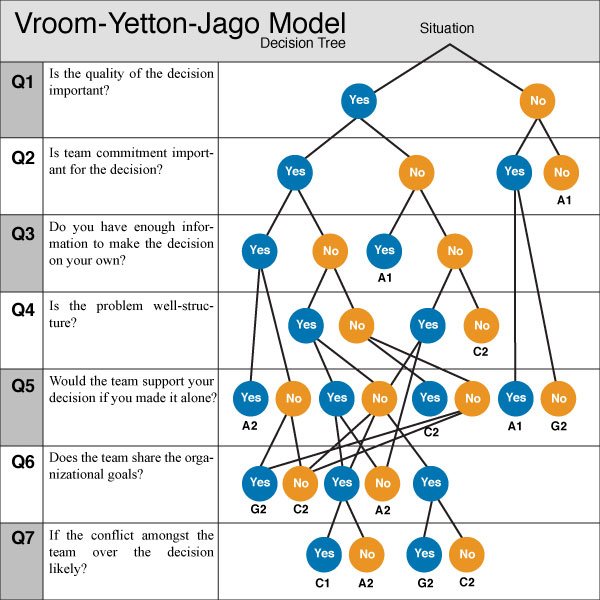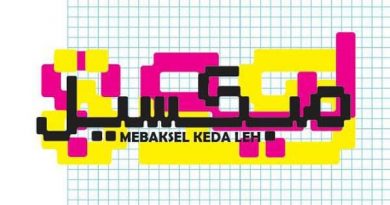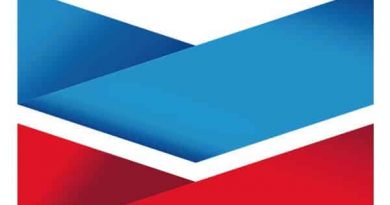Vroom-Yetton-Jago: Deciding How to Decide
Design managers and art directors face critical times when they need to make strategic decisions that will not only affect the design process but also the entire production stage and subsequently the success of the product. While it is impossible to element the risk involved in decision-making, managers reduce this risk to a minimal level by deciding if they need to make the decision alone or consult with the team for the best results. Different models have been provided to guide managers through this decision making process.
One of the theories used to help managers to take decisions is the Vroom-Yetton-Jago model. It was developed in 1973 as a collaboration between Victor Vroom and Phillip Yetton, and later in 1988 with the help of Arthur Jago. This model aims to identify the best management style that can be applied in different situations, and subsequently the optimal decision-making approach to implement in these situations. The Vroom-Yetton-Jago model defines different managers and how they make decisions. Basically, it says that the decisions we make are affected by three main factors that work together: quality, the potential for collaboration, and the amount of time available.
Quality: This factor is concerned with the quality of the decision and how important it is to make the best choice. It also considers the future consequences of the decision. The higher the quality of the decision, the more time and team members should be involved in the decision-making process.
Collaboration: Is this a one-person decision that a design manager can make without consulting the team or does it require a collaboration and consultation from the team involved in the project? Adding team members to the decision-making process increases the quality of the output as well as the time required to reach a decision.
Time: What is the time limit for making the decision? The more time available to the design manager, the better quality verdict can be reached and more team members can be consulted.
Leadership Style and Decision Making
As mentioned previously, how the decision is undertaken depends upon the type of leadership style adopted in the project. When a leader is asked to make a decision, it occurs along one of the five models of action identified below:
Autocratic (A1): The leader makes the decision by himself using existing information without any communication with the team.
Autocratic (A2): The leader consults with team members to get information, but make the decision by himself or herself without informing the group.
Consultative (C1): The leader consults the team members to get their opinion about the situation, but he or she makes the de0cision for themselves.
Consultative (C2): The leader consults the team members seeking opinions and suggestions, but he or she makes the decision for himself or herself. In this type of leadership style, the leader is open to suggestions and ideas.
Collaborative (G2): The leader shares the decision-making process with team members. He or she supports the team in making the decision and finding an answer that everyone agrees on.
Choosing any of these models depends on the situation and the three factors that affect the decision-making process: quality, collaboration, and time. The autocratic model is appropriate for the following situations:
- There isn’t enough time to consult the team members
- The leader is confident and experienced enough to make the decision
- The team members will accept the decision
While the consultative and collaborative models are appropriate in the following situations:
- The leader needs more information about the scenario
- The situation isn’t clear for the leader
- There is enough time to consult the team members and hear their suggestions
Vroom-Yetton-Jago model Decision Tree
In order to define the leadership style required in specific situations, the following seven questions should be answered:
- Is the quality of the decision important?
- Is team commitment important for the decision?
- Do you have enough information to make the decision on your own?
- Is the problem well-structured?
- Would the team support your decision if you made it alone?
- Does the team share the organization’s goals?
- Is there likely to be conflict amongst the team over the decision?

Pro’s and Con’s of the Vroom-Yetton-Jago model
The advantages of the Vroom-Yetton-Jago model are its flexibility and ability to organize the decision-making process. The model is highly flexible and the choices allow the leader to make the right decision based on any situation. The model can also provide a process for leaders to experience the decision-making process as an objective.
On the other hand, the disadvantages of the model include the automation of the process and the lack of considering personal factors for the leader. Also, the questions used in the model may not be precise enough to reach ideal use. Additionally, there are concerns about whether the Vroom-Yetton-Jago model can work with a large team or group of people.
Conclusion
The Vroom-Yetton-Jago model analyzes the decision-making process in order to reach the best methodology to make a decision based on the factors of quality, collaboration, and time. The basis of the model revolves around every situation needing a different style of leadership. Therefore, seven Yes/No questions should be asked in order to identify the best way to approach the situation. The resulting answer will vary between the five leadership types.
While there are advantages and disadvantages for this model, it provides a tool for leaders and design managers to decide which route to take to make a decision. Some situations requires consulting a team and making a group decision yet others may require a more autocratic attitude, especially when there is a limited time to hear from group members.
[/ms-protect-content]






